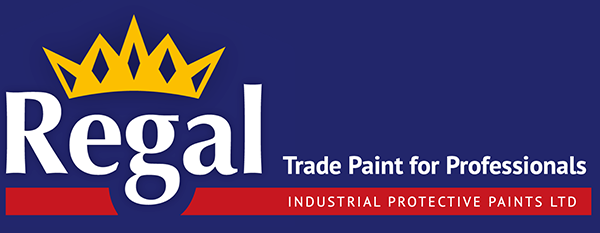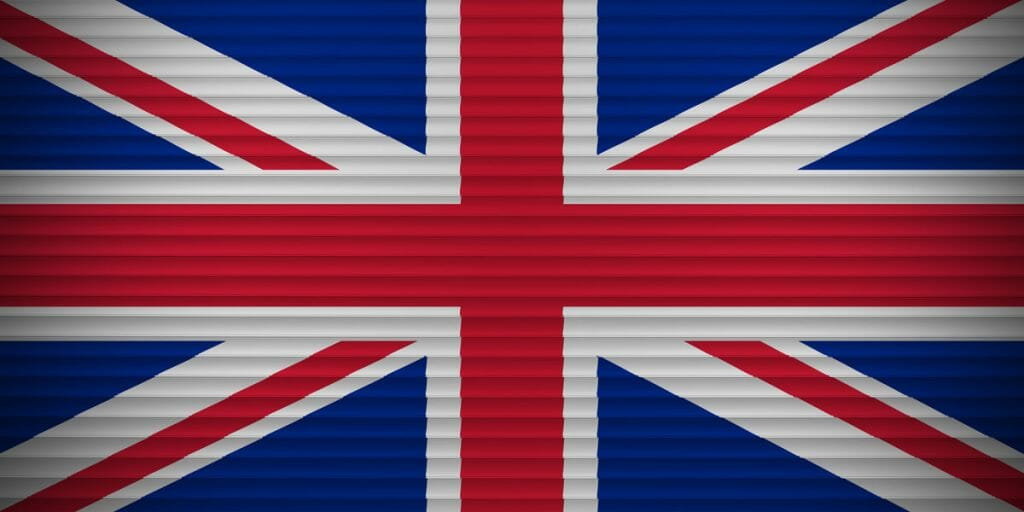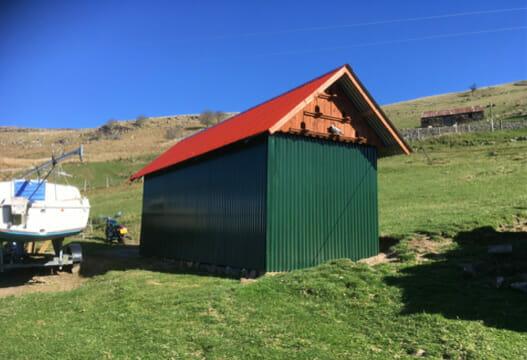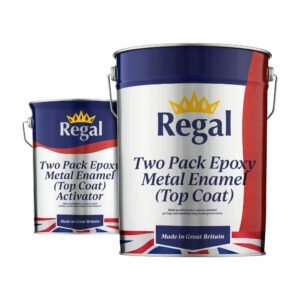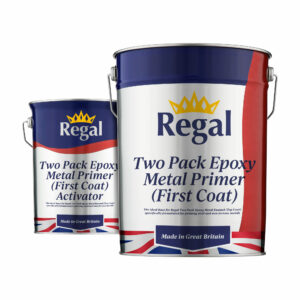Our Range of Metal Paints A-Z
Anticorrosive High Build Phosphate Quick Dry Primer is a single pack priming solution suitable for most metal substrates. This metal paint is also suitable for pre-treated aluminium and galvanised steel. High Build Phosphate Quick Dry Primer gives excellent protection against corrosion. Excellent build levels and can be re-coated in most types of finish. - Coverage: 5 m² per litre - Touch Drying Time: 30 mins - 1 hr - Recoat: 12 hrs - Hard Drying Time: 24 hrs
Regal Skip and Container Paint - Made in our factory, this product is a tough, long lasting, fast drying, semi-gloss primer finish made on a high build alkyd resin. Using Skip and Container paint eliminates the need for two coats and cuts the drying time between coats, reducing labour and paint costs. Enhanced with calcium phosphate, with excellent anticorrosive properties, Regal Skip and Container Paint protects against corrosion and impacts.
Two-Pack Epoxy Metal Primer - Designed for a wide range of metal substrates, our two pack epoxy primer offers excellent durability and resistance to contact with solvents, acids, alkalis and salts. It’s hardwearing surface gives good protection against corrosion due to it’s phosphate content. Two-Pack Epoxy Metal Primer is suitable for galvanised steel and aluminium. - Coverage: 5-10 m² per litre - Touch Drying Time: 12 hrs - Recoat: 24 hrs - Hard Drying Time: 48 hrs - Full Cure: 7 days
What do we know about metal paint?
The answer is: a lot.
We started out as contractors to the offshore oil-industry, spray-painting the North Sea rigs. We went on to develop a hard-wearing coating suitable for use in cold and harsh environments and later sold this formulation to Crown Paints. Industrial Protective Paints Ltd was born. Over the last 30 years the business has grown as we formulate and manufacture a wide range of protective metal-coatings. Here on our dedicated Metal Paints page, we share our knowledge with you to help you to choose the products most suitable for your project. If you have questions not answered here or if you need technical advice, please call us on 01782 550733.
OUR METAL PAINTS AT A GLANCE
WHAT IS "TWO-PACK" EPOXY METAL PAINT?
Two-Pack Epoxy Metal Paint is our most hard-wearing metal paint. Here, ‘Two-Pack’ refers to the fact that there are two items per pack. If you order a Regal Two-Pack Epoxy Metal Paint, your order will come to you in two cans: the pigmented resin (in the larger can) and the epoxy activator (in the smaller can). To use, you will need to pour the activator (the smaller can) into the pigmented resin (the larger can). You will also need to thoroughly and gently mix the two parts together before the paint can be used.FIRST COAT
Two-Pack Epoxy Metal Primer - Designed for a wide range of metal substrates, our two pack epoxy primer offers excellent durability and resistance to contact with solvents, acids, alkalis and salts. It’s hardwearing surface gives good protection against corrosion due to it’s phosphate content. Two-Pack Epoxy Metal Primer is suitable for galvanised steel and aluminium. - Coverage: 5-10 m² per litre - Touch Drying Time: 12 hrs - Recoat: 24 hrs - Hard Drying Time: 48 hrs - Full Cure: 7 days
TOP COATS
WHAT IS "SINGLE PACK" METAL PAINT
Regal Single-Pack Metal Paints do not need an activator and so they will come to you in a single can. You will still need to stir the paints properly before use.FIRST COAT
Anticorrosive High Build Phosphate Quick Dry Primer is a single pack priming solution suitable for most metal substrates. This metal paint is also suitable for pre-treated aluminium and galvanised steel. High Build Phosphate Quick Dry Primer gives excellent protection against corrosion. Excellent build levels and can be re-coated in most types of finish. - Coverage: 5 m² per litre - Touch Drying Time: 30 mins - 1 hr - Recoat: 12 hrs - Hard Drying Time: 24 hrs
TOP COATS
Regal Skip and Container Paint - Made in our factory, this product is a tough, long lasting, fast drying, semi-gloss primer finish made on a high build alkyd resin. Using Skip and Container paint eliminates the need for two coats and cuts the drying time between coats, reducing labour and paint costs. Enhanced with calcium phosphate, with excellent anticorrosive properties, Regal Skip and Container Paint protects against corrosion and impacts.
What makes a good metal paint?
What Makes a Good Metal Paint?
Metal Paint covers a whole spectrum of coating technologies from the simplest 3 coat system favoured by traditionalists of a primer, undercoat and finish coat to the products favoured by the DIY market as single pack, direct to metal coatings (also known by their finish as “smooth” or “hammer finish”) to high end epoxy finishes and polyureas. Recently water based products have also entered the market but so far the performance has not lived up to the dream and the basic chemistry – iron needs two basics to corrode – water and oxygen – both of which you find in abundance in water based coatings and even the best so far do not match the performance of a well formulated solvent based or solvent free coating (yet!). In fact even the type of metal has an impact on your choice of coatings. Iron, steel and variants thereof corrode rapidly in the presence of water and oxygen by forming the well know hydrated iron oxide – rust! So for these metals specific chemistry is used to combat this in the form of barrier pigments, highly cross linked polymers and anti- corrosive pigments to inhibit the formation of the oxides which cause blistering and coating failure. Other metals found in general use fall broadly into the category of non-ferrous metals (Zinc hot dipped, galvanised, plated or in the form of aluminium or brass / copper) and these different metals all have a different electrochemical corrosion potential. In simple terms – corrosion is a battery with the metal losing material at the anode (pitting) and metal ions “joining” the solution and being deposited at the cathode as salts
